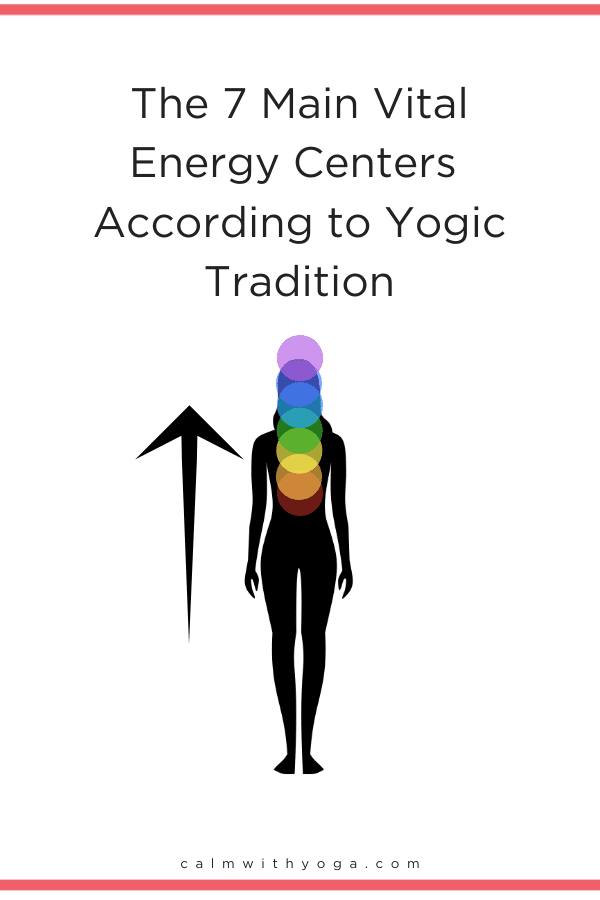1 – Upper Dantian Located in the forehead slightly above the eyebrows. (This is similar to the third eye chakra in the yogic tradition) 2- Middle Dantian Located in the center of the chest near the heart. (This is similar to the heart chakra in the yogic tradition) 3- Lower Dantian Located in the lower belly. (This is similar to the sacral chakra in the yogic tradition) The term Dantian (aka Tan Tien) translates to the “elixir field,” or “sea of qi.” These concentrated energy fields run along the center of the body and are like reservoirs of qi (chi) that store energy (vital force/life energy).
This is a similar concept to the Yogic Philosophy Chakra system, except that chakras are spinning energetic vortices, and the Dantien is more like a holding receptacle of energy. This is also similar to the Japanese medicine and martial arts concept of ‘Hara,’ the energy field located in the same region as the lower dan tian.) These three fields impact the whole body and are an important focal point in tai chi (aka t’ai chi ch’uan) and qigong exercises as a way to create more qi flow (vital energy) throughout the entire body. When these receptacles are abundant and full you experience an abundance of physical, emotional, and mental health. When there is a blockage or low energy then you’ll experience the opposite.
The Lower Dantien:
The lower dantian is particularly important, as it is thought to be the first and original source of Qi energy, (in Chinese martial arts it is considered the center for power.) The other two dantian can’t be felt unless sufficient energy has been accumulated in the lower dantian. (96) It also happens to be smack dab where our Gut-Brain and Microbiome are. This is not a coincidence. The goal here is to build our energy in these reservoirs so that we create mental, emotional, and physiological (dynamic) balance. We start first by becoming aware of our dantian (and in particular the lower one) and learning to “establish a connection” with it by sensing our own internal body. Professor Jerry Alan Johnson, PhD. is an internationally recognized Qigong practice Grand Master and a TCM doctor. He explains the importance of cultivating awareness of our lower dantian: In his book Internal Elixir Cultivation: The Nature of Daoist Meditation, author and Daoist scholar Robert James Coons links the lower dantian to our body’s autonomic nervous system (ANS) function, and suggests that by focusing on it, we can impact ANS function: Kinesthetic communication is the level of awareness referred to as “the intuition of the physical body,” and is stimulated by particular aspects of the subconscious. The subconscious mind picks up many signals from the environment that are not processed by the logical mind. The subconscious mind may react to these signals with spontaneous body movements, or with subtle but powerful emotional responses sometimes referred to as “gut feelings.” Often, the feelings experienced in the Lower Dantian are very subtle. For this reason, Chi Kung (Qigong) doctors are trained to establish a heightened degree of awareness of their own body, and are thus able to pick up subtle variations and energetic shifts within themselves and others… Cultivating this ability requires the practice of paying attention to the physical body (training kinesthetic awareness). A high level of awareness of the physical body, the surrounding environment, and the relationship between the two, is required in order to maximize kinesthetic communication.” (97)
Dantian Breathing:
This area is not a specific one, but rather a general area that contains this elixir energy… When considering modern science, it is quite accurate to say that the area around the lower abdomen is indeed extremely important to the overall function of the body and mind. Not only does the area contain the majority of reproductive and digestive organs, but it also contains the majority of the sympathetic and parasympathetic nervous systems. These two parts of the autonomous nervous system take care of functions such as “fight or flight,” rest, sexuality, healing, and many other important things. They are also considered as not being consciously controllable by people, unlike the central nervous system, which to some extent can be felt and manipulated. Daoists seem to have discovered that by simply focusing the mind and breathe on the area around the lower abdomen, they can indirectly assist the function of the autonomous nervous system and improve their health and longevity.” (98) It’s no secret that properly performed breathing techniques can help to calm the nervous system and also improve digestive function and gut health. You can begin practicing basic Dantian Breathing by following these steps:
- Sit upright and comfortably
- Close your eyes
- Bring your attention to your breath. (Notice the ebb and flow of the inhales and exhales as they are without needing or wanting to change it.)
- Now imagine a golden ball of warm energy in the form of a sphere in your lower dantian. (The area of the lower belly about 2-3 inches from your belly button.)
- With each inhale envision the ball of light expanding and with each exhale envision the ball of light contracting.
- Keep going and after a few rounds place your palms on your lower dantian and breathe with it. (Notice whatever sensations come up and slowly start to become acquainted with this energy center.) REFERENCES : (1) http://taichibasics.com/three-dantians/ (2) http://www.ichikung.com/html/dantians.php (3) Coons, Robert. Internal Elixir Cultivation: The Nature of Daoist Meditation, 2015

